
Blog
Beyond Blocks and Toys: Why Loose Parts Matter in the Early Years
Welcome to a world where bottle caps become treasures, pebbles turn into pretend playmates, and creativity knows no bounds! In this blog post, we sit down with Jessica Angell, Nursery Manager at Kindred Odstock— one of our Ofsted outstanding-rated nursery in Salisbury—to explore one of her favourite approaches to early years learning: loose parts play. In this piece, Jess shares how everyday items like shells, buttons, and wooden blocks can ignite imagination and exploration in children, fostering curiosity and resilience. Read on to discover why loose parts hold such significance for Jess and how they enrich the learning experiences of children at Kindred Odstock and beyond.

-
Could you explain what Loose Parts play is and how it fits into Kindred Odstock’s approach to learning?
Loose parts mean open-ended, alluring, beautiful found objects and materials that children can move, manipulate, control, and change during play. Children can carry, combine, redesign, line up, take apart, and put back together in endless ways. There are no directions or instructions and can be used alone or combined with other materials. Through carefully considered observations which are shared with parents and families, we create environments with loose part opportunities to suit the next development steps of the children within the group. We make continued adaptations for all children including those with additional needs and those who are gifted and talented in aspects of development. Loose parts enable the child to be the active player in the interaction between themselves, the objects, and the environment.
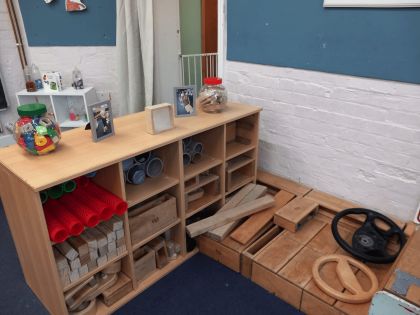
-
What kinds of materials are typically used for Loose Parts play, and how do you select them?
We encourage the use of real objects from other people’s worlds which enhance real-life play opportunities. We teach the children about reusing, recycling, and upcycling in order to promote a more sustainable way of life.
Top 8 loose parts for young children
- Fabric – fabric of all textures, including ribbons.
- Cardboard tubes – tubes of varying circumferences can be used in so many ways.
- Balls – offer balls of all sizes and textures.
- Container lids – lids of varying materials and textures. When placed with intent in different areas of the room, they could be used in many different ways.
- Egg cartons – these are great for holding and transporting objects.
- Boxes – small boxes for non-mobile children to put things into and larger boxes for walkers to push around or get into.
- Sensory bottles – sensory bottles filled with objects for exploring sight or sound. They should be small enough for a child to grasp. Toddlers enjoy the challenge of larger bottles to pull or roll.
- Pots and pans – a real favourite of all ages for banging on!
- Large fabrics draped
- Wooden planks creating various heights

-
Why is Loose Parts play important for children's development?
Loose parts have unlimited play possibilities rather than a single outcome, this means that there is not a specific way to use items. A plastic toy however is a closed object that has just one intent. An object appears when a child pushes a button. The people who manufacture these claim that children will be excited by it's vibrant colours, fascinating textures, and engaging sounds. The reality of this however, is that the novelty of a toy like this wears off very quickly. Once a young child has mastered the single task of making an object appear, they are ready to move onto another challenge. Loose parts, however, are adaptable and provide young children with infinite play possibilities.

-
How does it encourage creativity and problem-solving compared to more structured toys?
Loose parts enable creativity, which allows children to see things differently, think differently, create something unique, and solve problems. It involves the skill of creating something new or combining things in meaningful ways and our loose parts environment sets the scene for our children to become the players.
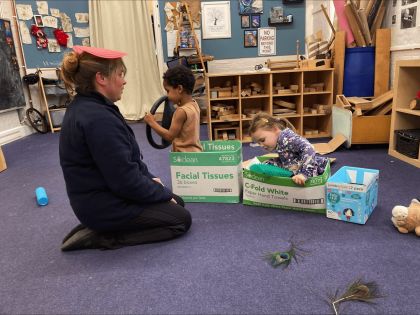
-
Loose Parts can be used by children of various ages. How does the play differ between younger and older children at the nursery?
When babies explore materials and items, they repeat patterns of behaviour with different objects resulting in babies and young children being able to construct knowledge and meaning about the world. A baby will constantly move items from one place to another or repeatedly scatter items out of containers, this is because babies need to tinker before they can create!
Older children will often use the loose parts to reflect on what they know and different experiences. They will use large crates and blocks to represent cars, trains and planes often acting out an experience they have had such as going on holiday with their family. They work as part of a team to manoeuvre and balance and share ideas.
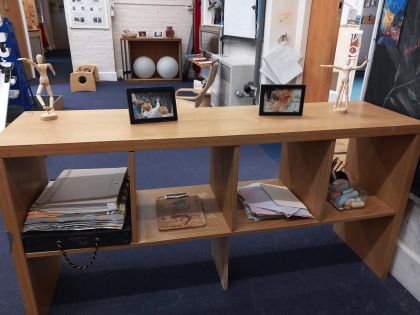
-
How do you and your team support and guide children during Loose Parts play without leading the play?
Our staff always challenge themselves to come up with different resources and environment setups in order for us to further captivate our children to think critically and differently through all aspects of the curriculum. Adults need to allow lots of time for children to explore in play, to understand the importance of this play, adults need to stand back, observe, and learn from the child and ask themselves, what are their interests, how do they work with others, and what stage of development are they in? Allowing a child to lead their own play, you need to trust in the child, stand back from your own agenda and really watch what the child is communicating via their play.

-
How do you ensure the environment is safe for Loose Parts play, especially with younger children who may still be exploring by mouthing objects?
Resources are checked over before the children enter the room to ensure that there are not any broken objects, these are then removed from the environment. There needs to be ample room for them to move about and transport objects, if the room is cluttered, then accidents will happen, and this is monitored by the staff who are supervising and observing the children’s play. When selecting loose parts for different age groups, we need to think, are these blocks too big and heavy for the children, will a child struggle to lift it up resulting in them being dropped on a toe, but equally providing enough challenging resources for them. This is the same with those smaller items, if we were exploring loose parts with a large group of babies, we would ensure that the size of the objects was suitable for them to explore with their mouth, however, if the group was smaller, we would be able to monitor the use of smaller objects effectively.
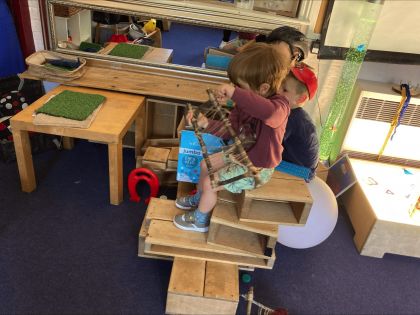
-
How do you encourage parents to incorporate Loose Parts play at home, and what tips would you give them to get started?
I always speak about how loose parts can really spark a child’s imagination and how it can encourage critical thinking and problem-solving. If they Select items that their child can transport, transform, and construct with, then they can get many different outcomes. If they pour rice down one end of a tube, where will it come out? How fast will it come out? If you tilt the tube, will the cause and effect be different. When a child plays with a plastic cucumber, it is always a cucumber, but when they play with a pinecone, then this could be an apple, a tomato, or a ball for rolling – anything they imagine!
Some tips that I would give my parents, would be to keep it simple, gather materials like rocks, shells, sticks, scraps of fabric, beads, and other small objects. Introduce cardboard tubes, and bits of guttering. Be sure to introduce a few materials at a time so that the children can become familiar with them and explore them in detail without being overwhelmed by lots of choices.
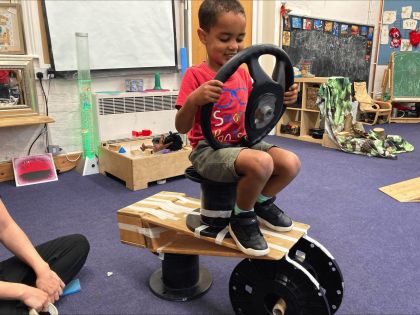
-
What common misconceptions do you find people may have about Loose Parts play, and how would you address these concerns?
I wouldn’t say I have ever experienced anyone who has had misconceptions about loose parts, other than comments about small pieces or when using more fragile pieces of equipment. I address these by highlighting the benefits loose parts have on the children’s development and how we use our respectful care approach, we respect the children to give them real tools, real equipment as well as demonstrating to the children about how to respect equipment.

